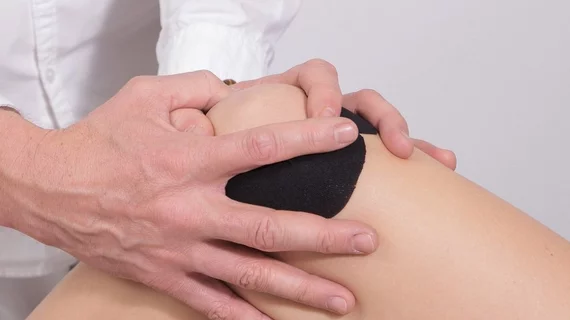‘Not as safe as we thought’: Radiological researchers cast doubt on common joint treatment
Imaging investigators are questioning whether commonly used steroid injections to treat hip and knee pain are actually safe.
In a study published Tuesday, Oct. 15, in Radiology, researchers noted that such shots could actually be leading to rapidly progressing osteoarthritis and eventual joint collapse. They’re cautioning clinicians to at least incorporate those potential risks into patient consent forms.
“What we wanted to do with our paper is to tell physicians and patients to be careful, because these injections are likely not as safe as we thought,” co-author Ali Guermazi, MD, PhD, a professor of radiology at Boston University’s School of Medicine, said in a statement.
“We’ve been telling patients that even if these injections don’t relieve your pain, they’re not going to hurt you, but now we suspect that this is not necessarily the case,” he added.
Guermazi and colleagues reviewed past literature about complications following treatment with corticosteroid injections. They estimated about 8% of patients in their sample experienced an adverse event, which commonly included—accelerated osteoarthritis progression with loss of space around the joint, stress fractures that occur beneath cartilage, death of bone tissue, and rapid joint destruction.
To avoid these complications, the authors urged radiologists to carefully scrutinize joint images from patients who have mild or no osteoarthritis, particularly when pain does not align with radiological findings. Providers should rethink injections when patients have acute pain not explained by x-rays, since it could be caused by another underlying condition. And most importantly, the authors emphasized, clinicians should warn young patients or those who are early in their treatment course about the risks of corticosteroid injections for joint pain.
The study has several limitations, including its small sample size of 459 subjects. But it offers a key lesson for imaging professionals, Richard Kijowski, MD, a radiology professor at the University of Wisconsin School of Medicine, wrote in a corresponding editorial.
“Patients might be more than willing to take the small risk of an adverse joint event requiring eventual joint replacement for the possibility of at least some degree of pain relief after intra-articular corticosteroid injection,” he wrote. “However, patients have the right to make this decision for themselves, and this requires radiologists to discuss all potential risks and benefits with the patient when obtaining written informed consent.”

